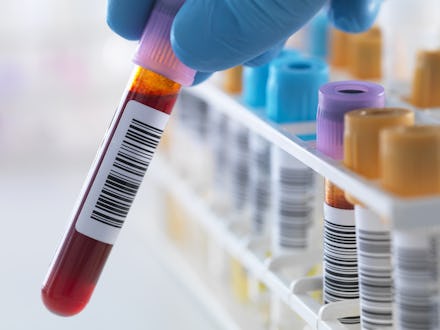Google's New Patent Might Be Huge News for Diabetics

Welcome to the needle-free future of diabetes care.
While the race for a less-invasive method for taking blood has been going on for months, a new patent from Google could mean real money will go toward replacing an archaic method of self-diagnosis: The finger-prick glucose test, an experience that over 29 million U.S. citizens know too well.
The patent was published on Thursday and hasn't been approved yet, but it would involve a blood-draw system that sends a surge of gas triggered by the user into a cylinder, sending a microparticle towards the skin fast enough to pierce it. The pressurized cylinder automatically sucks up a tiny amount of blood.
Blood is still taken, but it's an incredibly small amount compared to the most common method of blood-drawing, which is commonly used to test glucose levels in diabetics.
Google has made no specific plans to put the patent into use. In fact, when the Verge emailed Google, a spokesperson replied, "We hold patents on a variety of ideas — some of those ideas later mature into real products or services, some don't. Prospective product announcements should not necessarily be inferred from our patents."
Still, given the projects in Alphabet's new Life Sciences branch — which include smart contact lenses to monitor glucose levels and nanotech-based methods of testing for cancer — this could be another move to corner diabetes' high-tech healthcare market, in which diabetic citizen-scientists, like diabetic advocate Timothy Omer, have already begun hacking their own medical tech.
Google's spokesperson probably wasn't just playing coy. Other companies, like NASA, create blanket patent applications just in case, down the line, they want to be able to build something without getting held up on the legal red tape. But hopefully it becomes an active program and helps put real funding into a problem that should've been solved a long time ago.
As long as it doesn't look like the massive smartwatch design included in the patent.
h/t The Verge